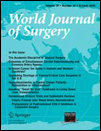Diagnosis and Treatment of Diffuse Cavernous Hemangioma of the Rectum: Report of 17 Cases
H. T. Wang and X. H. Gao contributed equally to this work.
Abstract
Background
Diffuse cavernous hemangioma of the rectum (DCHR) is a rare benign vascular disease, which is often misdiagnosed and difficult to treat.
Methods
Seventeen cases of DCHR in our hospitals from 1995 to 2009 were identified. The detailed data of diagnosis, treatment, and prognosis were carefully studied.
Results
Seven, three, two, and one patient were mistaken as having hemorrhoids, colitis, portal hypertension, and rectal polypus, respectively. The mean delay time between initial symptoms and final diagnosis was 17.63 years (range = 0–48 years). Colonoscopy and MRI were important in the diagnosis of DCHR because of their high positive rates and specific features. All of the lesions originated from the dentate line, extending to the proximal colorectal wall. Most of the lesions were found to be restricted to the rectosigmoid wall and the rectal mesentery. Involvement of right gluteus maximus and right leg was revealed by MRI in two patients. After admission, six patients underwent coloanal sleeve anastomosis and seven patients underwent pull-through transection and coloanal anastomosis. The latter procedure was superior to the former with respect to length of operation, intraoperative blood loss, intraoperative blood transfusion, and perioperative complications.
Conclusion
DCHR is often misdiagnosed. Preoperative colonoscopy and MRI are essential in making the correct diagnosis and to depict the extent of the lesion accurately. Due to its origination from the dentate line and the involvement of the whole layer of the rectal wall and the rectal mesentery, the treatment of choice for DCHR is complete resection by the pull-through transection and coloanal anastomosis.




